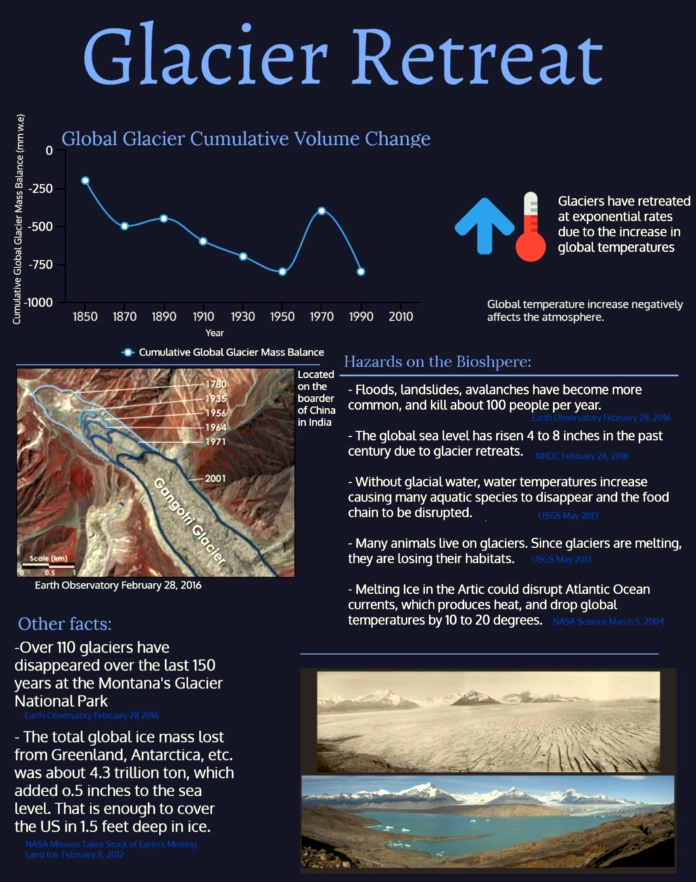Geography
Glacial Retreat
- 10 Mar 2023
- 4 min read
For Prelims: Glacial Retreat, Floods, Landslide, Pensilungpa Glacier (PG), Durung-Drung Glacier (DDG).
For Mains: Factors Influence Glacial Dynamics, Impact of Glacial Retreat
Why in News?
Recent studies on Himalayan glaciers show that the variability in retreat rate and mass balance in different sectors of the mountain range is primarily linked to topography and climate.
- However, variable retreat rates of glaciers and inadequate supporting field data make it challenging to develop a coherent picture of climate change impact.
What are the Factors Influence Glacial Dynamics?
- A team from Wadia Institute of Himalayan Geology (Uttarakhand) studied two glaciers with different characteristics, the Pensilungpa Glacier (Ladakh) and the Durung-Drung Glacier, (Ladakh) for a comparative study of glacier fluctuations between 1971 and 2019.
- They quantitatively evaluated the influence of the debris cover on the loss of ice mass in summer and on the terminal recession of glaciers.
- Their study confirms that the glacier retreat rate is controlled by climate change and the topographic setting and morphology of the glacier.
- They also found that the thickness of the debris cover significantly alters the glacier response to climate forcing.
- Other factors such as snout geometry, glacier size, elevation range, slope, aspect, debris cover, as well as the presence of supra and proglacial lakes also influence the heterogeneous glacial dynamics.
What is Glacial Retreat?
- About:
- Glacial retreat refers to the process of a glacier shrinking or receding in size over time due to a decrease in ice accumulation or an increase in ice melt.
- Causes:
- This can be caused by a number of factors, including rising global temperatures, changes in precipitation patterns, or changes in the geography of the surrounding landscape.
- Impacts:
- As a glacier retreats, it can lead to a number of significant environmental impacts, including changes in water availability, alterations to local ecosystems, and increased risk of natural disasters such as floods and landslides.
- In addition, the loss of glacial ice can contribute to rising sea levels, which can have significant impacts on coastal communities and ecosystems around the world.
UPSC Civil Services Examination, Previous Year Question (PYQ)
Prelims
Q.1 With reference to the water on Earth, consider the following statements:
- The amount of water in the rivers and lakes is more than the amount of groundwater.
- The amount of water in polar ice caps and glaciers is more than the amount of groundwater.
Which of the statements given above is/are correct?
(a) 1 only
(b) 2 only
(c) Both 1 and 2
(d) Neither 1 nor 2
Ans: (b)
Q2. Which of the following phenomena might have influenced the evolution of organisms? (2014)
- Continental drift
- Glacial cycles
Select the correct answer using the code given below:
(a) 1 only
(b) 2 only
(c) Both 1 and 2
(d) Neither 1 nor 2
Ans: c
Mains
Q.1 How do the melting of the Arctic ice and glaciers of the Antarctic differently affect the weather patterns and human activities on the Earth? Explain. (2021)







